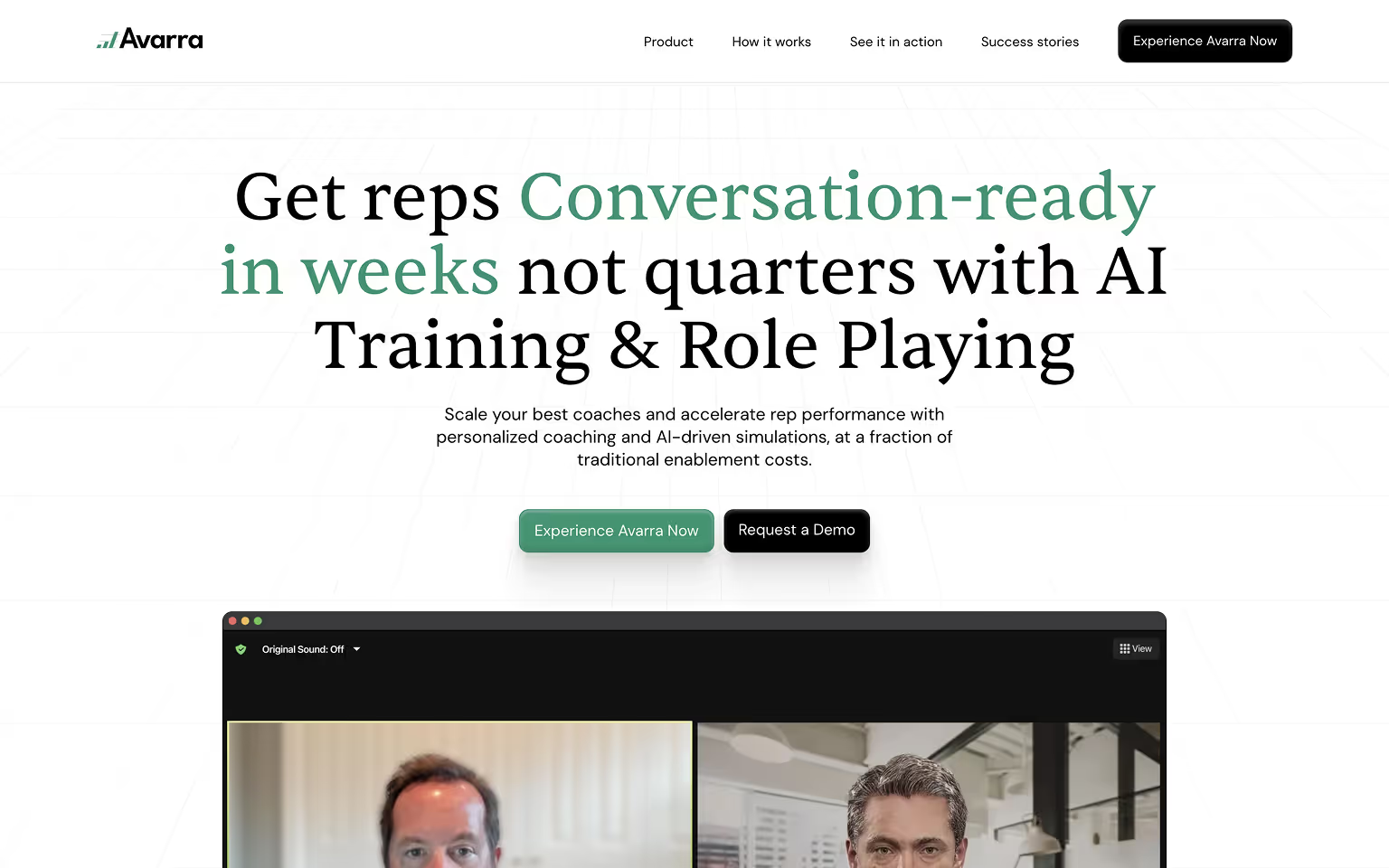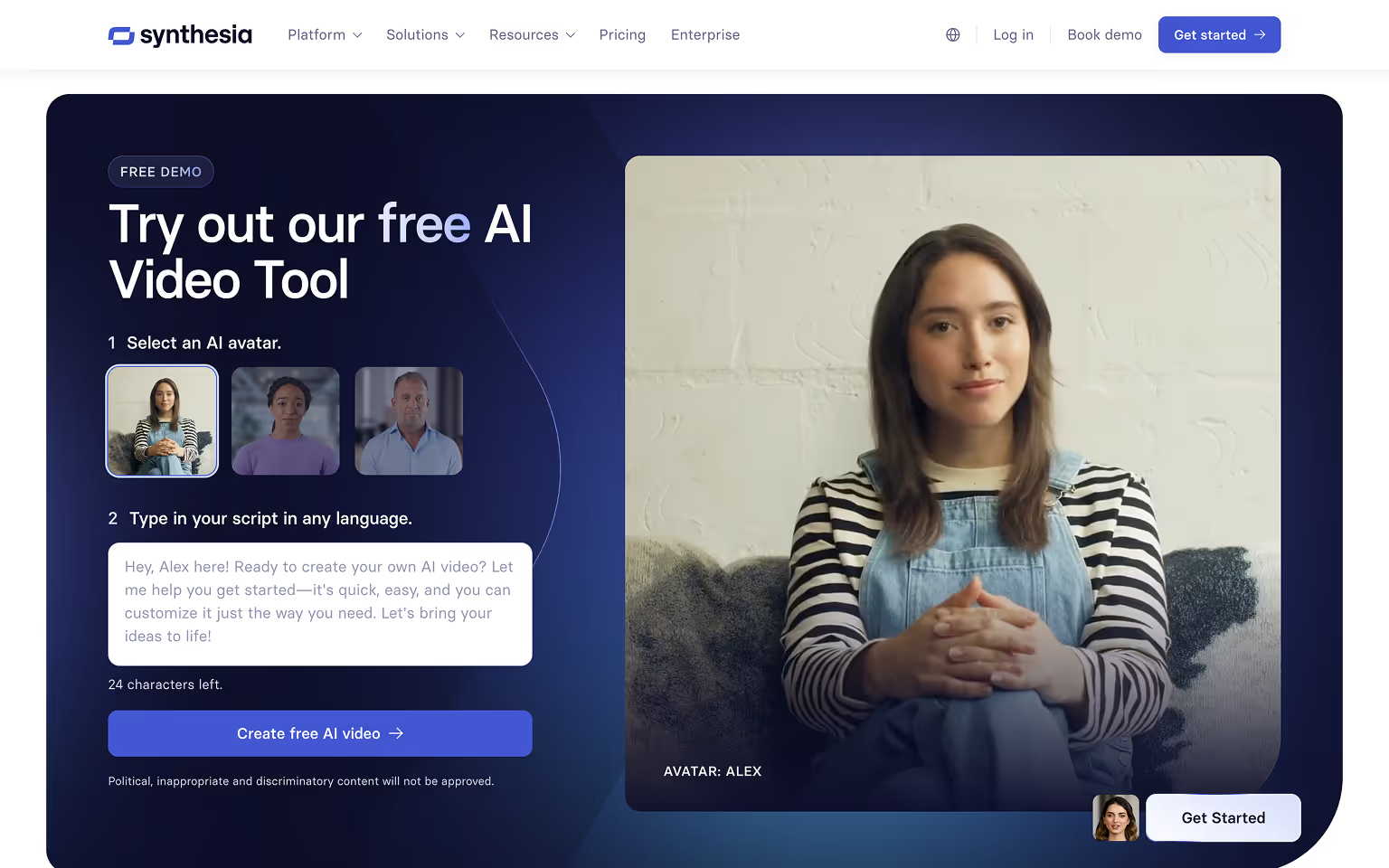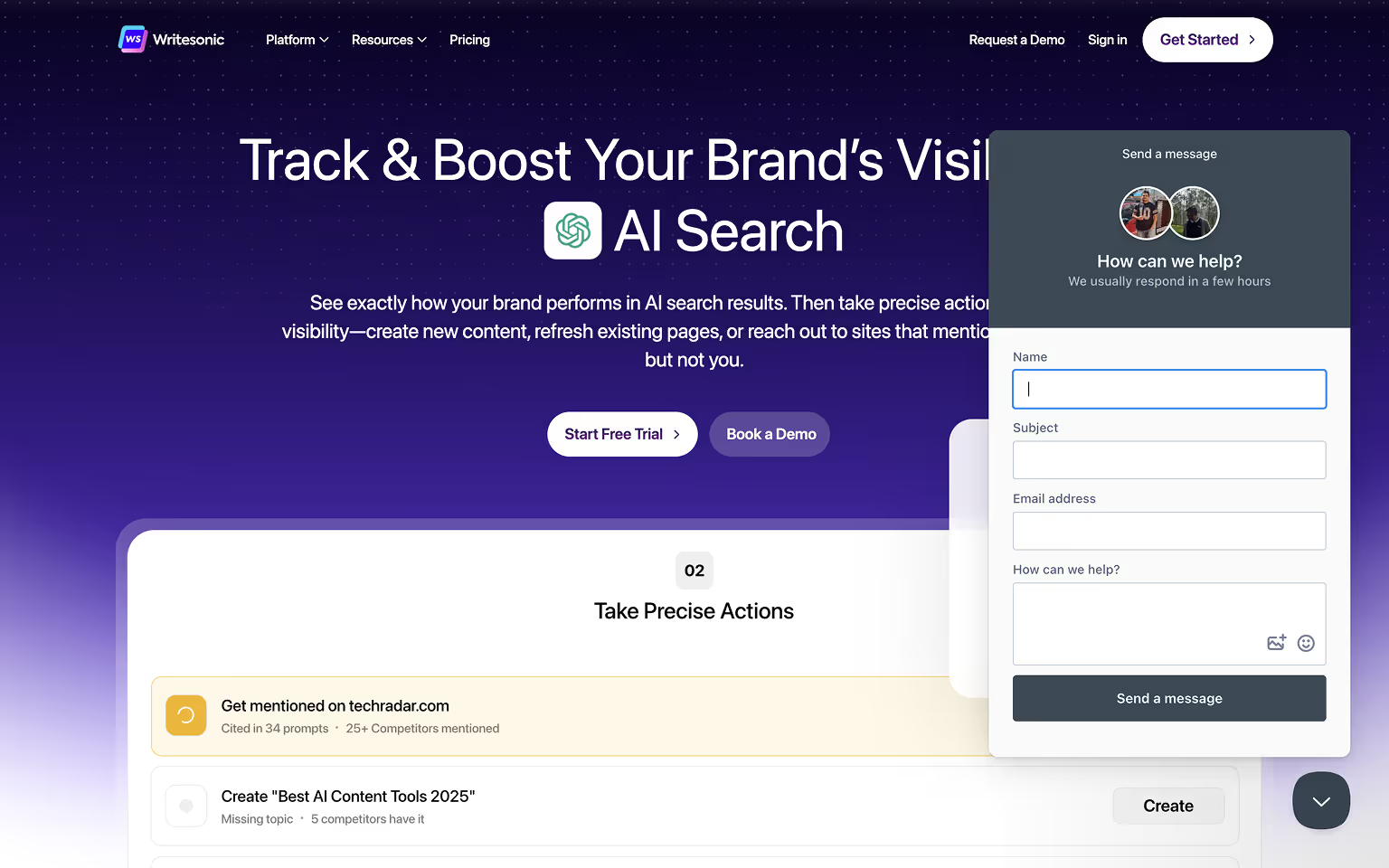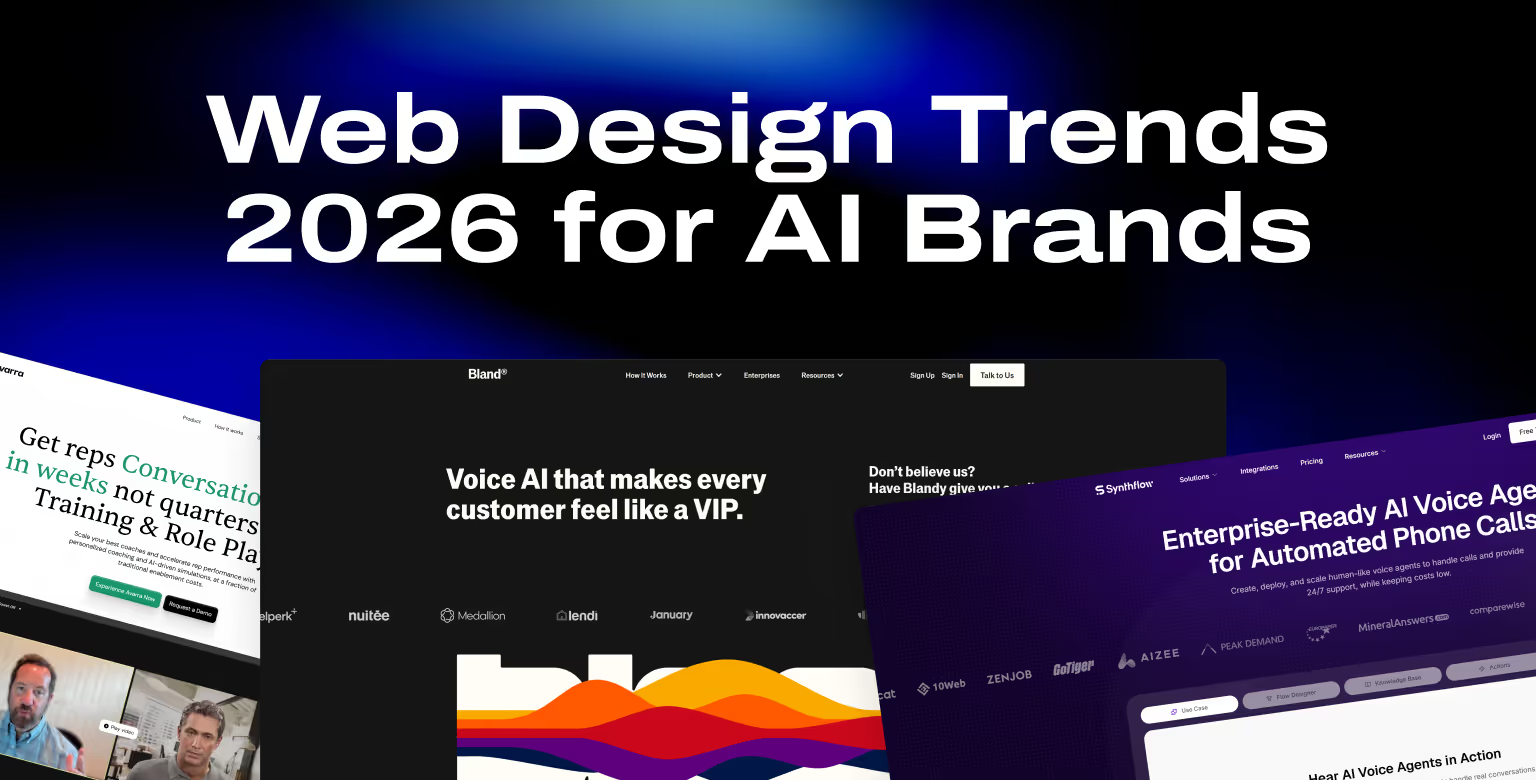AI sites must earn trust fast, explain complex products clearly, and convert qualified interest. The sections below highlight the 2026 design patterns that help you do that, with examples and steps you can ship this week.
Why Web Design Trends Matter for AI Brands
For AI companies, design is a business tool that helps establish brand trust, message clarity and most of all, boost conversions. This underscores the importance of a comprehensive B2B website strategy that aligns design with broader business goals. AI products introduce novelty through technology and terminology, making it tough on users to relate to whatever it is the brands do. Design is one of the tools that makes these products understandable and brands relatable.
Build Human Connection
AI brands need to feel human. Visitors not only want to both know there are people behind the product as well as feel human emotion coming from the brand itself. That emotion comes from tone, content, and design working together.
When the copy sounds human, the visuals feel intentional, and the content speaks to real problems the ICP is facing, the brand becomes relatable. Without that, even the most advanced product can feel distant and disconnected.
Use Design to Solve Problems
Design should make the website work harder. Good layouts guide attention, remove friction, and automate simple interactions. Motion, structure, and flow help users understand products faster while keeping them engaged.
Improve Marketing Performance
Modern design trends help your marketing site improve its performance when benchmarking against your web design marketing strategy. In example metrics such as user engagement, bounce rates, conversions get immediate improvements. When applied well, design trends implementation is one of the simplest ways to improve the results from your marketing efforts without a full revamp.
Stand Out from Competitors
Like in the time period when Web3 was an emerging industry, a large percentage of AI websites look and feel the same. By using the following design trends, brands become more memorable instantly. As few companies take design risks, doing so creates a marketing advantage.
Trend 1: Less Is More as Mantra for Layouts
Minimalism continues to define leading AI brand websites in 2026. Minimalism is defined by clean layouts with no clutter and an abundance of white space promoting better focus. To implement it, reduce crowding the pages with animations and dense copy. Allow the product visuals and message to take center stage.
Why Minimalism Works
- Clarity Enhancement: It creates a higher quality of focus on the offer.
- Stronger Visual Hierarchy: Fewer elements mean that the main message and CTAs stand out more.
- Performance: Leaner layouts load faster and feel smoother across devices.
Minimalism Trend in Action
For Avarra AI, we replaced a cluttered, metaphor-heavy site with a minimal, outcome-driven design. Each section had one clear purpose, backed by real product visuals and concise copy. The result: prospects finally understood the product before sales calls, demo requests jumped to 15–20 per day, and conversions stabilized at 10 qualified leads daily — achieved not through new features, but by removing everything unnecessary.

Actionable Tip
Run a design audit focused on clarity. Ask: Can each section stand alone with one core takeaway? If not, merge or remove. The most effective AI websites avoid saying more. Instead they make what matters impossible to miss.
Trend 2: Bold, Expressive Typography
Typography is the core of powerful design tools for AI brands. In 2026, the text readability is a non-negotiable that most of your type shouldn’t even be noticed by your visitors.With that said, the type that is noticed should be making a statement. Strong typographic choices define personality, guide attention, and elevate even minimalist layouts.
Why Bold Typography Works
- Instant Recognition: Bold fonts can become a signature element of your brand.
- Improved Readability: Clear text hierarchy helps users scan and consume content faster and with less strain.
- Emotional Tone: The typeface conveys the emotion, helping you build out a strong brand.
Bold Typography & Expressive Trend in Action
In a website revamp, for Bland AI, bold typography drove clarity and authority. Oversized headlines framed each section, guiding attention and reinforcing the brand’s confident tone. Paired with a playful visual identity, the revamp improved readability and boosted organic traffic by 35% post series B announcement.

Implementation Tips
- Establish hierarchy between headlines, subheads, and body text using font size, weight, opacity, and/or color.
- Combine bold fonts with lots of white space for impact.
- Stick to two complementary typefaces.
Conversion Insight
A strong headline paired with a short subhead makes your value proposition easier and faster to act on. Use design rules for typography to enhance that effect.
Trend 3: Designing with a Strong Brand Personality
With the rise of AI builders, building websites has turned into somewhat of a dystopia. Every brand wants to stand out, yet most of them end up with similar visuals and stale tones of voice., That’s why building a brand personality is an absolute number one key differentiator for all brands, let alone for those in the AI industry. Companies communicating character through design tend to build stronger connections with their audiences.
Why Having a Strong Brand Personality Works
- Memorability: Visitors remember brands that feel human and consistent.
- Trust: A distinct tone and visual identity signal confidence and authenticity.
- Engagement: Emotionally resonant designs encourage users to stay longer and explore deeper.
Strong Brand Personality in Action
For Bland AI, the redesigned website incorporated bold colors, a hero animation with soundwaves, and interactive nodes lighting up in the footer. These design elements contributed to a distinctive, tech-forward feel that reinforced their innovative identity, leading to being featured in design inspiration sites such as land-book and a 35% increase in organic traffic post-launch.
Implementation Tips
- Identify from 3 to 5 adjectives that define your brand’s tone.
- Design the brand identity with those adjectives in mind; align color, typography, and imagery to these traits for consistency.
- Ensure brand consistency across platforms and unifying web, social and print under a single umbrella.
Conversion Insight
Make it your main branding KPI to get more relatable to your audience / ICP. This will help you engage and convert your target audience. Even when they don’t take the desired action, developing the brand brings long term benefits that are worth sacrificing conversions in the short term for.
Every interaction should make visitors feel something about your brand. Decide what that feeling should be and design for it.
Trend 4: Interactive Product Playgrounds
Home pages should be used to explain the product value fast. They often don’t do it (well). People don’t want to fill out the demo form, only to speak to a sleazy salesman. They’d rather explore the product directly on site before talking to anyone, or pulling out their wallets. Interactive product playgrounds give that possibility. They show users the value of the platform with no commitment.
Why Interactive Playgrounds Work
- Faster Understanding: Explore the product in action instead of reading about it.
- Higher Engagement: Interaction increases time on site, leading to lower bounce rates.
- Qualified Leads: Users who explore features are already showing buying intent.
Interactive Playground in Action
For Synthflow AI, we designed an interactive demo that lets visitors test AI voice agents, explore agent creation, and see how the platform works without logging in. The playground quickly shows product value, keeps users engaged, and removes friction from the first interaction. The redesign boosted product clarity, guided users toward conversion, and strengthened Synthflow’s enterprise positioning after their $20M Series A raise.
Implementation Tips
- Start small with one or two interactive features that demonstrate real value.
- Provide instant feedback to confirm every user action.
- Track engagement to learn which interactions drive the most conversions.
Conversion Insight
Qualify leads by letting users experience the product before the sales team steps in. A simple, interactive playground builds understanding faster, increases trust, and turns curiosity into qualified leads.
Trend 5: AI-Generated Design Elements and Media
The integration of AI tools into design workflows has brought a lot of missing color to the creative industry. As generative visuals get better, brands continue using them to create more original web experiences.
Why AI-generated Design Elements Work
- Efficiency: AI-generated visual assets speed up production time and reduce associated costs.
- Originality: Often a better alternative to stock photography.
- Relevance: Easy to adjust assets to context, enhancing personalization.
AI-Generated Design Elements in Action
For Synthesia, the human touch through visual assets is generated via AI. While gradients, reflections, and lighting effects that create depth and movement are very forward looking, the human touch makes the brand relatable. Their approach both reinforces the brand’s positioning as both human-like and high-tech, without overwhelming the user.

Implementation Tips
- Keep design and product visuals aligned with your core identity.
- Use generative media where it adds context or interactivity.
- Maintain performance by optimizing video and image formats.
Conversion Insight
Generative visuals communicate innovation without saying a word. When executed tastefully, the site just looks right. In those rare cases, these can reinforce credibility.
Trend 6: Interactive Calculators and Self-Service Tools
B2B buyers don’t expect interactive tools, which is exactly why they stand out. Pricing and ROI calculators give visitors an instant sense of value, turning static websites into engaging, educational experiences that convert.
Why Interactive Calculators Work
- Immediate Insight: Visitors see outcomes on their problems over abstract claims.
- Higher Engagement: Interactive tools keep users hooked.
- Lead Qualification: Inputs reveal intent and buying readiness.
Self-Service Value Calculator in Action
For Avarra AI, we built a productivity calculator that shows how much time sales teams can save with AI-based training simulations. Visitors enter their team size and ramp-up duration to instantly see potential efficiency gains. The tool makes business value clear and quantifiable, helping decision-makers understand ROI even before booking a demo.
Implementation Tips
- Keep inputs minimal to reduce friction.
- Show results immediately and make them easy to interpret.
- Add a clear next step, such as “Book a demo” or “Email results.”
Conversion Insight
Interactive calculators move prospects from awareness to action. When users can measure value themselves, the conversation shifts from why your product to hey, this is a no-brainer. Let’s get onboarded.
Trend 7: AI-Powered Chatbots and Live Chat
Instant communication has become a core user experience. Answering queries faster often gets rewarded. That’s why chat tools use automation in combination with human support to bring better customer experiences and help convert visitors while their intent is high.
Why Chat Works
- Real-Time Support: Users can get help immediately without searching through pages.
- Higher Conversions: Quick responses remove hesitation and reduce bounce rates.
- Personalized Experience: Smart chatbots can tailor answers and route users to the right resource or person.
Chat in Action
Writesonic uses HelpScout live chat to combine automation with direct support. Visitors get live responses to their questions within a single interface. This setup speeds up the process of qualifying leads, which encourages sign-ups.

Implementation Tips
- Automate FAQs and other simple queries , but escalate complex queries to team members.
- Keep tone conversational yet on brand.
- Review chat transcripts and refine all interaction points.
Conversion Insight
Chat tools speed up the transition from interest to action. When users know they can get help instantly and actually get answers faster, they ask more and convert at a higher rate.
Trend 8: Personalization with AI
Personalization has become a defining factor in how users experience websites. In 2026, it’s about showing the right content to the right visitor at the right time.
Why Personalization Works
- Relevance: Visitors engage longer when content matches their interests.
- Efficiency: Personalized journeys help users find what they need faster.
- Trust: Tailored experiences feel human and thoughtful, reinforcing credibility.
Examples
- Industry-Specific Content: An AI analytics platform might display different case studies depending on whether the visitor is from finance or healthcare.
- Behavior-Based Adjustments: Returning visitors might see tailored calls-to-action or different product features based on their previous browsing.
Implementation Tips
- Start with Segmentation: Categorize audiences by behavior, location, or company size.
- Use Dynamic Components: Personalize hero sections, testimonials, or pricing content.
- Respect Privacy: Keep personalization useful but non-intrusive.
CRO Perspective
Personalized experiences turn interest into intent. When visitors feel the website “gets” them, they move through the decision process faster and with more confidence.
Bringing It All Together: Innovate, Humanize, and Convert
The web design trends shaping 2026 all move in a single direction, establishing a better connection between the brands and their audiences. AI companies use design not to simplify complexity, but to explain it in a relatable and trustworthy way.
We apply the same principles throughout our website design process, where every visual decision starts with understanding the product, the business, the brand, and the audience it serves.
Key Takeaways
The Continuous Evolution of Design
Websites evolve with their users. Open up your analytics and see how visitors interact with your site. Gather data, and make small, regular improvements. Aside from following trends, a successful web presence requires you to keep your design useful, clear, and connected.
Want to see more websites that are using these trends well, explore our AI website examples showcasing how leading AI companies blend clarity with engaging design.
A Note on Conversion Strategy
Like business decisions, design decisions should be made to reach a measurable goal. In terms of CRO, those can be reducing bounce rates, increasing demo bookings, or something else entirely. Start tracking results by tying visual updates to outcomes. Measure how implemented trends perform individually and refine continuously.
Need help implementing these web design trends in a strategic way? Our B2B web design agency helps AI brands like yours turn design into performance and make the most of every visitor.
Frequently Asked Questions
What makes web design for AI brands unique?
AI brands' sole goal is to simplify the communication behind complex products. The design should communicate their USP while staying approachable and easy to follow.
Why is minimalist design effective for AI companies?
Minimalism keeps attention on the core message. Clean layouts and clear hierarchy make content easier to read and understand.
Do interactive elements really improve conversions?
Yes. Calculators, demos, live chats and micro-interactions encourage visitors to engage with the product. The more they get out of exploring the site, the higher the chance they convert.
How does personalization improve user experience?
Personalized content is always more relevant. Tailoring case studies, CTAs, or messaging to each ICP increases trust and engagement.
How often should a website be redesigned?
There’s no right answer to this question. Some brands do it on a yearly basis. That said, a site is always an MVP. Even after a full overhaul, it’s a work in progress. With the business evolving over time, so should the site through the core visuals, message, and features. Base those changes on data and user feedback to make the most out of your site.




